More Dry Weather in Brazil: Cause for Concern?
- Ryan Delany

- Dec 7, 2021
- 3 min read
Those of you who receiving my premium reports have seen me discussing the weather in #Brazil for some time now, and I wanted to open it up for public discussion. The fact of the matter is this: after enjoying an impressive recovery in rainfall in Sep and Oct, the last several weeks of rain has been rather disappointing.
My (tldr) view is that even though the #precipitation has been abnormally bad, the current forecast suggests that the #crop will not be adversely affected---however, it does open the crop up to a substantial risk in January.
In this article, I will support this claim by providing some background on where the recent past puts the coffee plants, what the current forecast is and how it opens the plants up to risk.
Recent past
The #frost and #drought from this past season has wrought havoc on the current 22/23 crop that is developing in Brazil. We can see in the below graphic that the drought in 2020 and 2021 caused significant damage to the branch growth and #flowering potential for 22/23. On top of this was the catastrophic frosts that further decimated the potential of what was supposed to have been a bumper crop.
For more on this you can listen to my podcast with Steve Wateridge of Tropical Research.
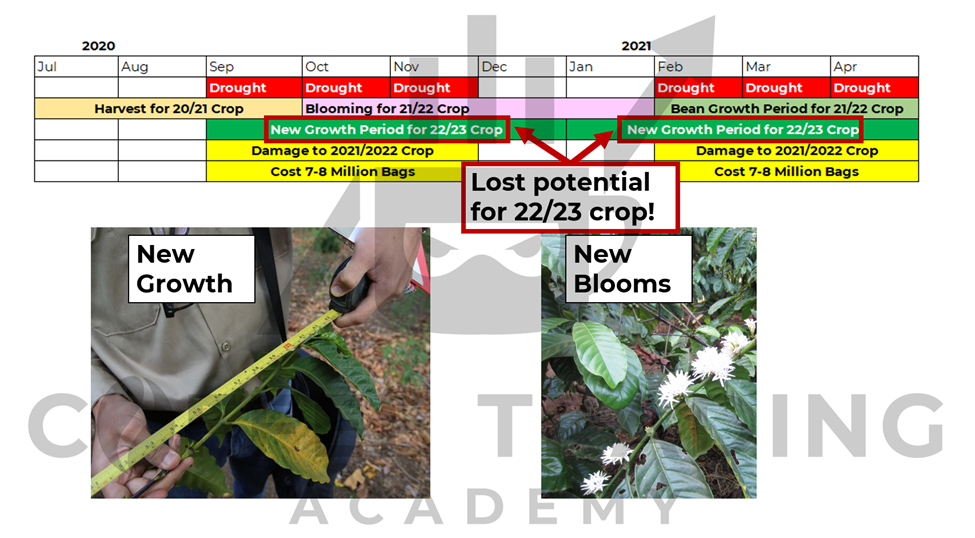
Fortunately, good rains in October and November saved the trees from total disaster, improved the health of the plant and triggered a robust flowering. It is typical for there to be a strong flowering when good rains follow a period of stress for the plant. Unfortunately, it is also normal for that strong flowering to be less than successful if the previous stress was too much.
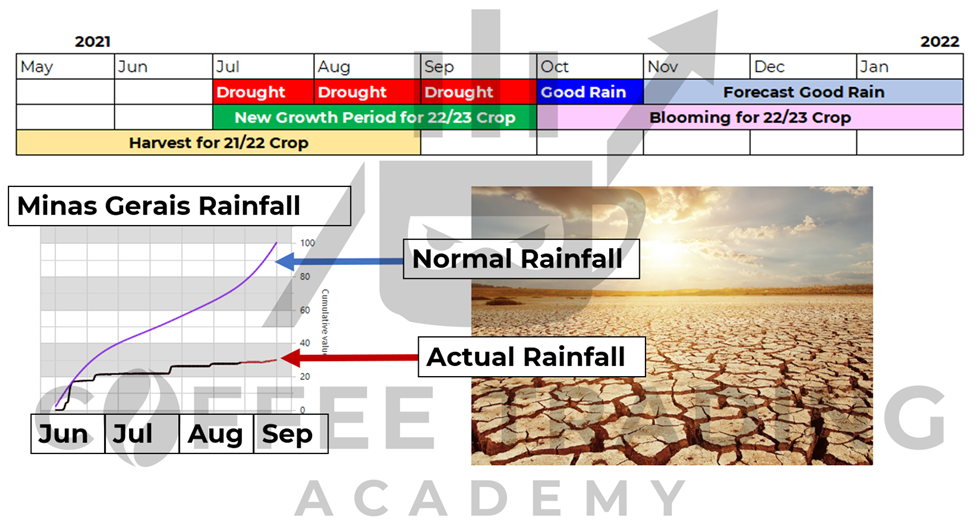
This seems to be the case as the reports from the field are that there was a lackluster “setting” of beans from fertilized flowers.
Going forward, rains will be needed to support and maintain the cherry growth for those cherries that did set.
When looking at tree crops like coffee, I like to look at a longer time frame like the 90 day (for more info on why, you can listen to the podcast with Commodity Weather Group’s David Streit).
The 90 day has build up a healthy buffer from the extensive rain we saw in Oct and Nov but that has been steadily dwindling. The region is still receiving some rain, but a lot less then we normally would at this point in the wet season.
Essentially this is reducing the moisture buffer for the plants.
The 30 day is significantly below average for the season, but the 60 and 90 have dropped from 200% of normal to 110% of normal in a very short time.
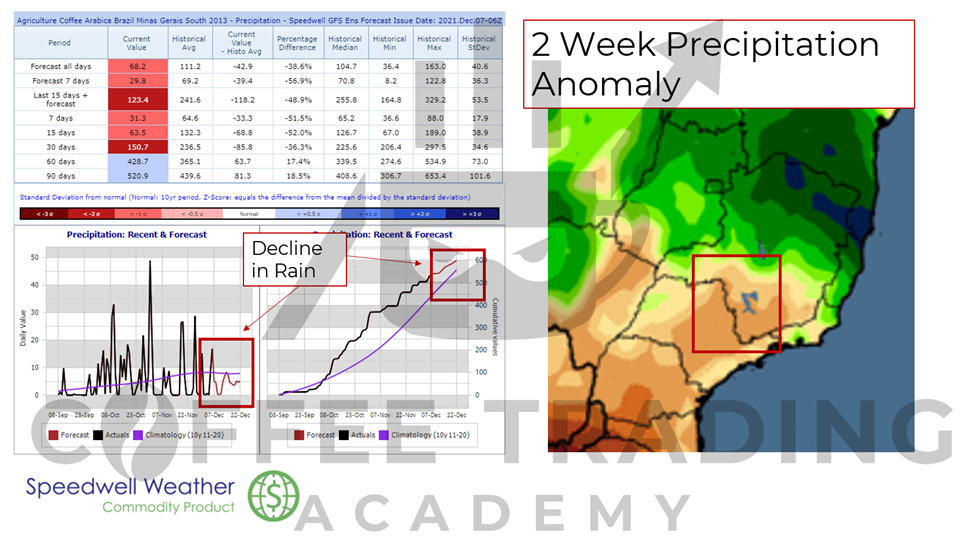
Current forecast
The next 2 weeks look quite dry and this brings the plants into vulnerable territory. Vulnerable in the sense that additional dryness could cause damage.
The good news is that long-range forecast says that this wont happen. The Jan forecast is for wetter than average rains. The bad news is that this forecast is not at all reliable.
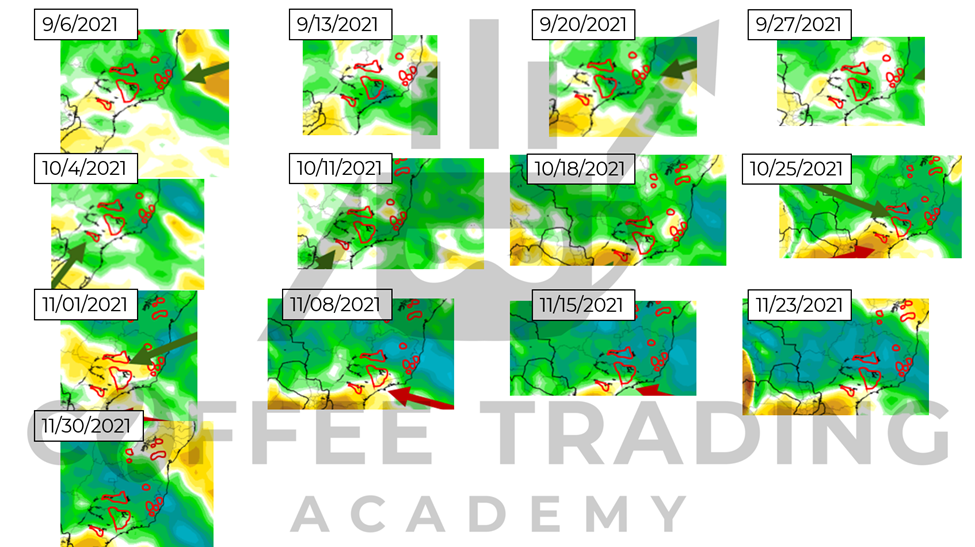
The ability to predict the weather drops markedly after two weeks out.
For example, from Sep through Nov the forecasts for December were for wetter than average or normal. In my weekly weather reports 9 of the 13 forecasts showed wetter than average Minas while 4 of those showed “normal” climatology. The two week forecast is currently showing significantly drier now which is a substantial turnaround for what was a pretty stable forecast.
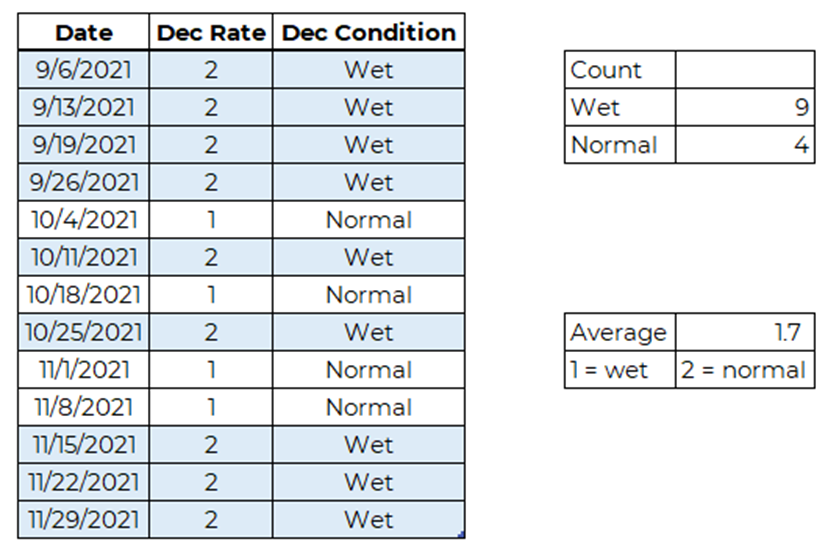
Why this is a concern
The risk going forward is that the rain does not materialize in January as per the forecast. If the rain is as poor in January as it was in December than we are moving into below average territory on the 90 day. Even this by itself would not be a disaster, the coffee plant can do reasonably well with below average rainfall.
However, there are two main points here to be concerned with: Number one is that the plants in Brazil have already sustained abnormal amounts of damage from the double whammy of the frost and drought from last year. The setting has been recorded as “disappointing” and so we are already starting from a lower point for the 22/23 crop year.
Number two is that the long-term forecast is not very accurate. For the last three months the long-term forecasts have been for a wetter than average December and that does not look to be how things are shaping up.
A month ago, this was not a concern because we had built up a healthy buffer of excess rain but that excess is being drawn down.
For the sake of the Brazilian farmer and the consumers of Brazilian coffee, I hope that the rain picks back up in January, but for now we need to be cautious. This crop is not out of the woods yet, and we need to be aware that another weather issue could actually make things worse.



Comentários